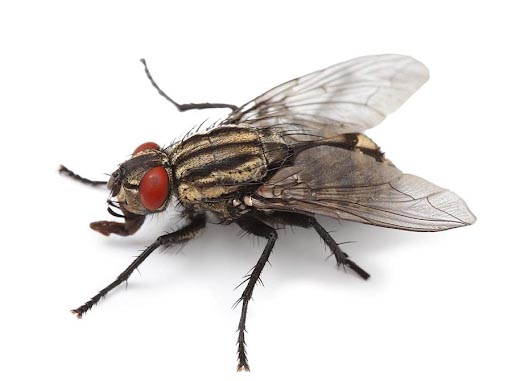Why are there so many flies in my house this spring?
Often mistaken for house flies, Cluster Flies emerge in spring. Flies from the last generation spend the winter dormant in attics and walls and become active again when the spring temperatures start to rise. They usually enter through gaps in roofs, attics, and eaves, and settle in warm, sun-facing spaces. Although the leave around early spring, they have been known to return to previously occupied spaces, leading to annual infestations.
Cluster Fly or House Fly?
- The cluster fly can be distinguished from the common house fly in several ways:
- Body characteristics. A cluster fly is a bit larger than a house fly and has a black/silvery-black checkered body. Young, newly emerged cluster flies have short light-brown/yellowish hairs on their lower bodies.
- Sluggish movement. The cluster fly will fly around the home but at a less frantic pace than that of the house fly.
- Overlapped wings. When at rest, the cluster fly will overlap its wings; the house fly’s wings remain separate.
- Clustering at windows (thus its name). If there is a large population of cluster flies, they tend to cluster along windows or inside attics and usually in little-used areas on warm, sunny days.
How to Get Rid of Cluster Flies
The key to avoiding an infestation in your home or office is to prevent them gaining access in the first place. You can use these measures to fly-proof your premises and getting rid of those already hibernating in cracks and crevices.
Our fly treatment plan includes the following:
- Detailed inspection of your home or business for conducive conditions that create fly problems
- Structural recommendations to prevent access. We determine what needs to be sealed or screened.
- Extermination to key areas to reduce fly populations.
- On going monitoring to confirm elimination.
- A fall application is also recommended before cluster enter structures for the winter.
Contact Us for Fly Control and Extermination

